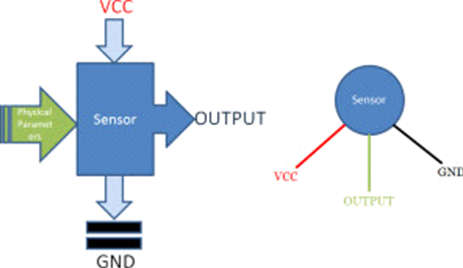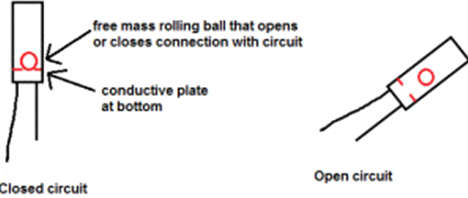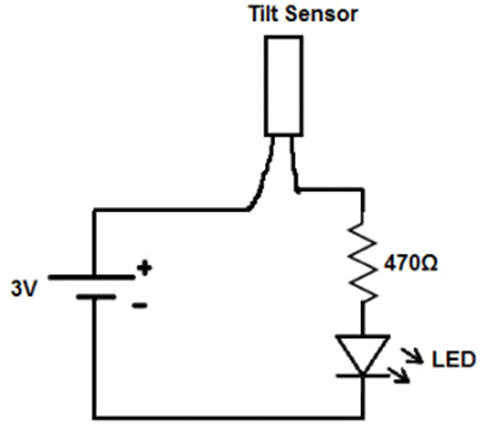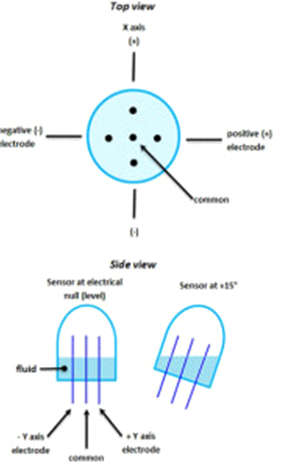- One of the biggest displays for aircraft manufacturers is the Paris Air show. Some of the brave pilots pull off incredible feats to display the speed of their craft. These pilots enhance their feats for the audience by using the speedy machinery of their aircraft. One of the essential components of this computer-assisted circuitry is a tilt sensor, which is a sort of transducer. This sensor aids in providing information about the planes’ horizontal and vertical inclinations so that the pilot may readily comprehend how to deal with impediments while the plane is in flight.
- Transducers are crucial to the pilots’ decision-making, thus. Concerning one or more axes, these sensors generate an electrical signal whose magnitude is proportional to the angle of inclination. Numerous applications, including off-road vehicles, portable computers, robotics equipment, aviation instruments, etc., depend heavily on these sensors.
- A sensor is a piece of equipment that reacts to various environmental inputs, such as heat, light, motion, temperature, pressure, and moisture. Current and voltage switches are made with sensors. Vcc, GND, and output are the three terminals on every sensor. The sensor is powered by Vcc; the ground is employed to give a constant negative reference, and its output is analog. However, certain sensors may have many output terminals.

Types of Sensors
Sensors are classified into different types.
- Light Detecting Sensor.
- Temperature Sensor.
- Gas Sensor.
- Humidity Sensor.
- Ultrasonic Sensor.
- Motion Sensor.
- Force Sensor.
- Analog Sensor.
- Digital Sensor.
- Color Sensor.
- Distance Sensor.
- Proximity Sensor.
- Ultrasonic Sensor.
- Magnetic Sensor.
- Pressure Sensor.
- Infrared Sensor.
- Robot Sensor.
Tilt Sensor
- Devices called tilt sensors to provide an electrical signal that changes in response to angular movement. Within a constrained range of motion, these sensors are utilized to measure slope and tilt. Because inclinometers produce both a readout and a signal, they are sometimes referred to as tilt sensors because tilt sensors only produce a signal.
Working Principle of Tilt Sensor
- These sensors consist of a rolling ball with a conductive plate beneath them. When the sensor gets power, the rolling ball falls to the bottom of the sensor to form an electrical connection. When the sensor is tilted, the rolling ball doesn’t fall to the bottom so that the current cannot flow through the two end terminals of the sensor.

Tilt Sensor Circuit
Required components for the tilt sensor circuit.
- Tilt Sensor
- 470 Ohms Resistor.
- Led or Load
- DC Voltage Source
- A basic circuit that uses a tilt sensor is shown below.

- The rolling ball settles at the bottom of the sensor when the device is powered up and in the upright position, creating an electrical connection between the sensor’s two end terminals. The circuit then experiences a short circuit, allowing the LED to get enough current. The circuit becomes open if it is angled so that the rolling ball doesn’t land on the sensor’s bottom along the direction of electrical conduction. This has to do with how the circuit works.
Types of Tilt Sensor
Different systems and methods to measure tilt, slope, elevation, and inclination are included in the classification of these sensors into different kinds.
Force Balance Sensor
- These sensors are expected to be used for DC acceleration measurements on ships, vehicles, airplanes, and seismic occurrences. They are gravity-referenced sensors. Inclinometers and tilt meters typically use these sensors. Force balance sensors have a frequency range of DC to 1000Hz and can measure levels from 0.0001g to 200g. The high accuracy, change in broad measurement, insensitivity to temperature change, and high accuracy of these sensors are their advantages. The pricey nature of this sensor is a drawback.
![]()
MEMS Sensor
- Solid-state MEMS are tiny sensors because they are made up of movable proof mass plates that are mechanically suspended from a reference frame. This method creates a system with microscopic dimensions by fusing mechanical and electrical components on a chip. Small refers to a size that is smaller than the thickness of human hair. Many medical, industrial, aerospace, consumer, and automotive applications use MEMS sensors as essential components. These sensors can be found in anything from satellites to smartphones, video games, and medical examinations. The fundamental IC fabrication process is used during the fabrication of MEMS.
Fluid-Filled Sensor
- These Sensors can either be capacitive or electrolytic.
Electrolytic Sensor
- Angles can be measured using an electrolytic sensor and reported as degrees, arc minutes, or arc seconds. Pitch readings with electrolytic sensors are incredibly precise in many applications. The great accuracy and tiny size of these sensors are readily maintained. These sensors work by using a glass or fluid-filled chamber. Between a shared positive and negative electrode, the fluid operates. The positive and negative electrodes of the electrolytic sensor uniformly submerge in the fluid when it is leveled, creating a balanced signal output. The two electrodes become unbalanced as the sensor is turned. As a result, the imbalance of any one of the electrodes is inversely proportional to the rotational angle.

Capacitive Tilt Sensor
- These kinds of sensors are made to sense tilt and inclination without making touch. These can function as sensors and switches. The capacitor sensor depends on variations in the capacitor when the shape of the capacitor is altered. The base material in this instance does not affect the capacitive sensing. These gadgets are made up of a center proof mass, comb drive capacitors, and suspension beams. The capacitance increases on one side and lowers on the other when a tilt occurs because the center of mass shifts towards one of the combs. The capacitive sensor’s performance ratio and cost-effectiveness are its key benefits, however, its restricted reaction is its main drawback.
Specifications of of Tilt Sensor
When selecting a tilt sensor, we should consider a few distinct specifications as shown below.
- Number of Axes.
- Resolution.
- Measuring Range.
- Sensitivity.
- Noise Tolerance.
- Output.
- Vibration.
Applications of Tilt Sensor
These sensors are used in many different applications. They are.
- Cameras.
- Video Cameras.
- Aircraft Flight Controls.
- Construction Equipment.
- Robotic Technology.
- Automobile Air Bags.
- Videos Game Controllers.
- Studying Human Movement.
- Thermostats.
- Automobile Security Systems.
